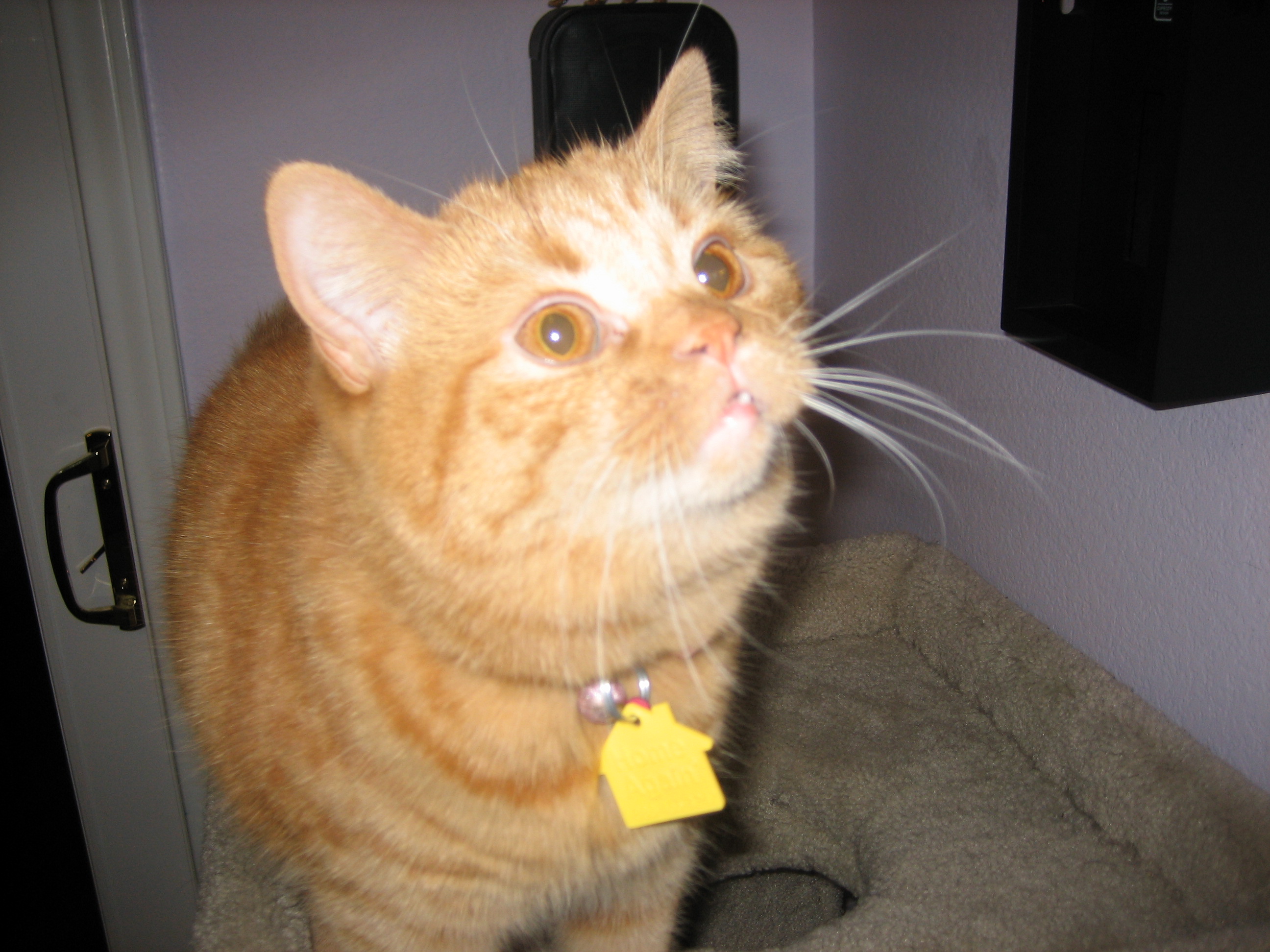
“Do you want Gracee microchipped?” inquires my veterinarian. “What?” I inquire. I have had cats all of my life and no one has ever asked me that question before. The indoor cats that I did have existed before they put microchips in cats. But Gracee was just a kitten. I had questions: “How does the chip work, how do you put it in her, does it hurt and is it dangerous?”
Gracee’s veterinarian injected the chip by a needle, under her skin and between her shoulders. There was no anesthesia; the time and discomfort it took was similar to that of a vaccine. Gracee didn’t flinch during the procedure. What does Gracee hate more? She hates having her nails trimmed!! The chips can also be implanted when the cats are being spayed or neutered and are under anasthesia.
It is recommended that only a veterinarian implant the chip. If it is placed in too far, it won’t be readable. If too much force is used, it can cause life-threatening problems. Vets know where and how it should be placed and can recognize signs of a problem and treat it if a problem occurs.
Does the chip ever migrate? Yes, rarely, but it can happen (usually in the first 24 hours). So, if your pet is lost and hopefully, taken to a vet’s office or shelter, the staff will scan the pet not only between the shoulders but also along the sides. It is suggested that when you take your cat in for their next physical, ask the vet or their assistant to check with the scanner to be sure the chip is still between the shoulders and that the scanner is able to pick up the numbers.
I did some research. Microchips are tiny electronic chips that are activated only when a scanner passes over them. They are not GPS locators, they don’t have batteries, they don’t emit signals nor do they contain your pet’s medical information or your address. All the chip has is a unique number that reads on the scanner when it is passed over the chip. Experts estimate that the chips last for 25 years.
You can research what chip manufacturer you want. The manufacturer maintains the registry data. After the chip is implanted, it must be registered. My vet took care of that and gave me the paperwork and the tag that has the telephone number to the registry and the chip’s ID number. I kept it simple, I went with what my vet recommended.
The fact that not all chips emit the same frequency is a problem. For example, chips with a frequency of 134 kiloHertz (kHz), will not be detected by a scanner that only reads a lower frequency (like 125 (kHz). However, a universal scanner (one that reads forwards and backwards) will detect all chips. Manufacturers are trying to supply shelters and veterinarians with low-cost universal scanners. Some pet caretakers found out that their pet’s lower frequency chip might not be detected so they have a higher frequency chip implanted. The American Association of Veterinarians indicate that inserting a second chip is not a problem whereas removing the first one is a surgical procedure that would require anesthesia and risk.
My cats are microchipped. They wear two tags on their safety or breakaway collars. Their tag from the chip manufacturer is yellow and has the registry’s phone number and the chip’s serial number on it. The second tag is red, in the shape of a heart. The second tag says: “I am Lost & Loved. My name is ‘Gracee.’” On the flip side of the tag are my telephone numbers as well as their Auntie Sharon’s. If, in the event their safety collar breaks away, then the ID tags will be gone. The chip is the only back-up plan. Last, but not least, it is important to keep the chip registry updated with any new addresses or phone numbers. The registry cannot look for animals but the fact that the pet is missing can be entered in their database. Microchip databases are online or telephone-accessed and are available 24/7/365.
The presence of a chip is not a 100% guarantee that you will get your pet back but it dramatically increases the chances. The Cat Authors are indoor cats. Even though I have trained them to not run out a door, they are cats and it can happen. I live in earthquake country. In the event of an earthquake or some other disaster, my cats may very well be able and be justified to run off. I pray that their collars and ID tags stay on. If they don't, I can only hope that whoever finds them will be honorable and compassionate enough to take them to a vet to have them scanned and returned to their family.
Information for this article was obtained from the 'American Veterinarian's Association' and the' Humane Society' websites.
